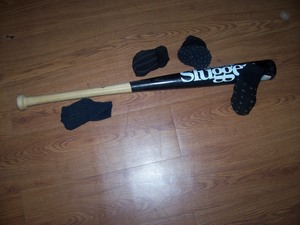Your Writing Style
Your writing style is simply the way you put sentences together and the way you construct a sentence. Style is very subjective. Different readers have different opinions of what they feel is good writing and what is bad writing. Some readers and editors prefer a passive voice (which is usually accepted in scientific articles and articles that are in the science field), while others prefer an active voice (which is usually accepted in articles focusing on the humanities field). You should develop your own style, but avoid some of the pitfalls that can bury a good writer.
Make sure that your sentences are strong, clear and effective. You don’t want to ramble on, saying little and repeating yourself over and over. Do not assume that your reader knows what you mean or that they understand what you are writing about if your sentences fall short of being clear. Sometimes you have to be detailed and explain what you mean. This is often “fleshing it out” and we will cover it in a later lesson. But, I will say here that you do not want to only skim the surface. You reader will not feel connected to you or what you write.
Avoid grammatical and spelling errors. They can butcher a good article or paper. If you are trying to write with a certain lingo or accent, make certain that you are really, really good. These intentional misspellings can be difficult to read and understand, particularly if the reader is not familiar with it. You may be able to get away with it, but, as I said, make absolutely sure you are good at it.
Avoid wordiness and awkward sentences. A sentence that is wordy or awkward can pass the grammatical rules, but it can still be difficult to read or understand. Choose your words carefully and brevity is usually the way to go. You want to express your ideas with elegance, while being persuasive and direct.
Get Your Point Across
Your primary goal in any type of writing is to convey a certain point or claim. The second goal is to do this while sounding intelligent. You want to communicate effectively with your reader and you want your reader to understand what you are trying to say. You should place your “hook” in the first paragraph, typically within the first 50-100 words. This includes your thesis and the “hook” that will keep your reader reading your article. You want to get your point across to your reader in the most straightforward manner as possible.
Use the Right Tone for Your Audience
The key to writing to your audience is to know your audience. Your audience will determine the tone of your article. The tone of a paper or article means whether the paper is conversational, such as sitting down and talking with friends, or technical, such as talking in a more clinical, straightforward tone. If you have any doubts about the necessary tone of your work, stick to being conservative. If you write in a conservative tone and need to step it up some to make it more conversational, this is better than writing in a chatty tone and having your work rejected altogether.
You don’t need to write your paper using sentences that are choppy and too terse, just make sure that you don’t distract your reader from what you are saying by how you say it. Develop your own style, bring yourself into your work and let your style be your trademark – but keep it appropriate for your audience. You can write in different tones and still maintain your personal style.
Improving Your Craft
There are some common errors that writers make regarding style. Following these simple tips will help you become a better writer and improve your writing skills. This will aid you in gaining more control over what you convey and write. You will have more control over what you tell your reader. The way that someone perceives your paper or understands it is determined solely on how you write it. If you do not have an emphasis on clarity, your message is likely to fall short. These technical tips will help you considerably:
Keep your writing simple and easy to read. Avoid extensive paragraphs and unusual language (for the most part – unless the article is technical or requires certain accents of dialects).
Keep your paragraphs short, around five sentences long. This does not mean writing cryptic sentences and paragraphs, you do still need to effectively convey your meaning. But be concise.
Placing a blank line between paragraphs or sections of your work gives it clarity and organization. It makes the work easier to read.
Write precisely and select your words carefully. Think about what you want to say and try to say it in the clearest, most precise, concise manner possible. Do not be afraid to use your thesaurus.
Brevity is important. The average person can grasp and retail about seven things at one time. This is in reference to ideas in sections and paragraphs. Bullet points are a great way to bring clarity to a set of ideas, yet separate them so that they are more easily absorbed and better understood.
Abbreviations and acronyms should be avoided if possible, but if you do use them, you should follow the AP style for this. For an acronym, write out the entire title or name and place the acronym in parentheses the first time you introduce the acronym or abbreviation in your work. For example, Federal Emergency Management Agency (FEMA). The same should be followed for abbreviations.
You can write any one sentence in a variety of ways. Passive sentences, on the average, take longer to read. Try to limit your passive sentences as much as possible. 3% to 5% is a good maximum for just about any paper, but some articles may require even 1% to 2%.
Misspellings that are used to convey certain dialects can be difficult to read. You may find it necessary to include them in some situations, but you should try to avoid them as much as possible.
Write in both upper and lowercase letters. This is much easier to read and much more professional.
If your paper or article is better organized and easier to read by using subtitles, then use them. This breaks up the article and makes it easier to read. It also lends some organization to the paper and article by giving your reader a map of sorts of your paper.
When you have finished an article or paper, step away and take a break from it. Go back later and reread for clarity and possible errors. This is particularly important if you are writing on something about which you feel passionate.
Develop your own personal style and write in your own voice. If you have a certain author whose style you like, you can follow the technique and use it to help develop your own, but put your personal stamp on it. Stephen King and Charlotte Bronte are both exceptional writers – each with his or her own unique style. But it is their style and they made it their own. You should do the same. Find your own voice to convey the message that you want to send to your readers.
Your personal style is what will bring your writing to life. Use these tips and instructions as a guide for creating your own style. Keep your technique on par and remember sentence structure, grammar and spelling. Lay your work out in a format that will be easy to read and to understand. You are the one thing between your message and your reader.




